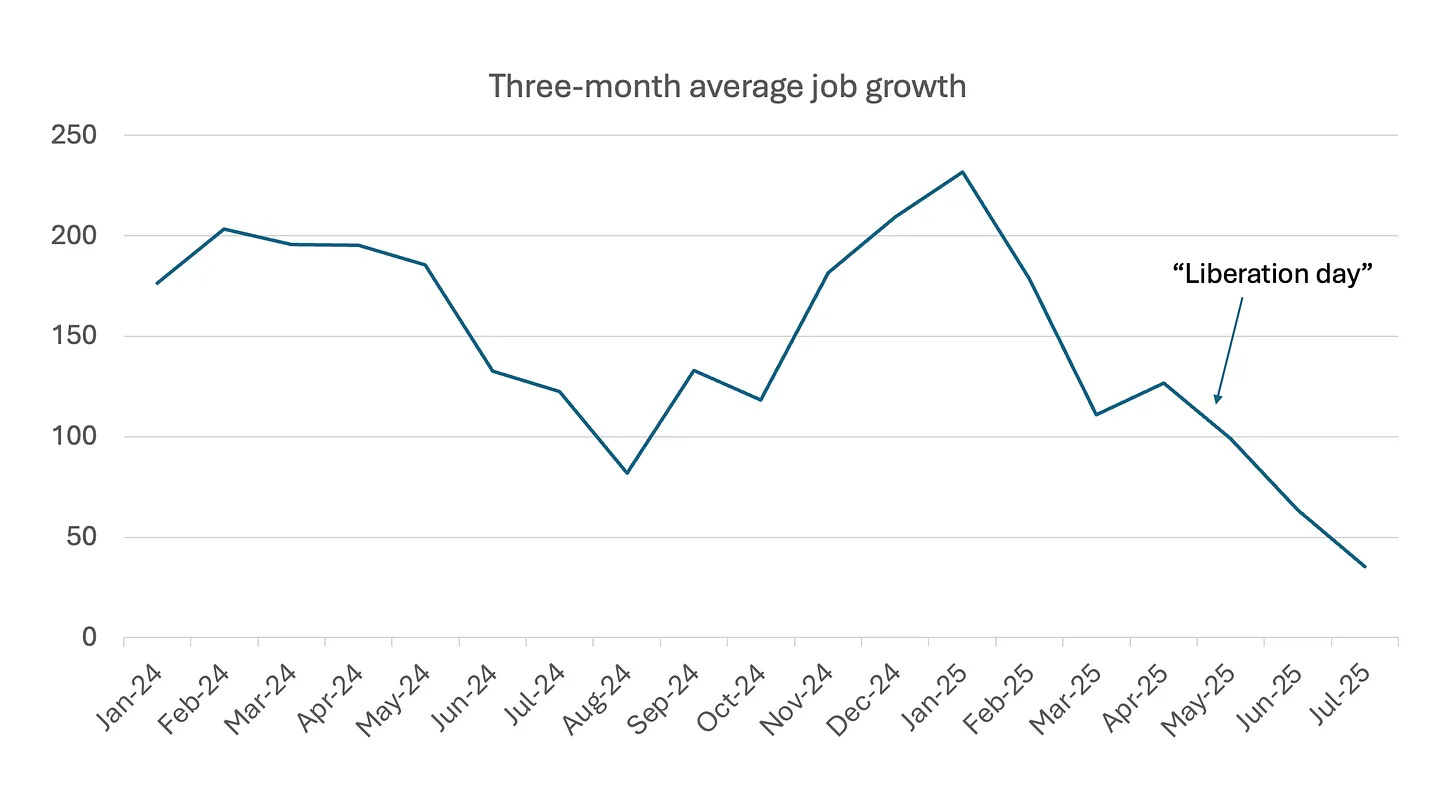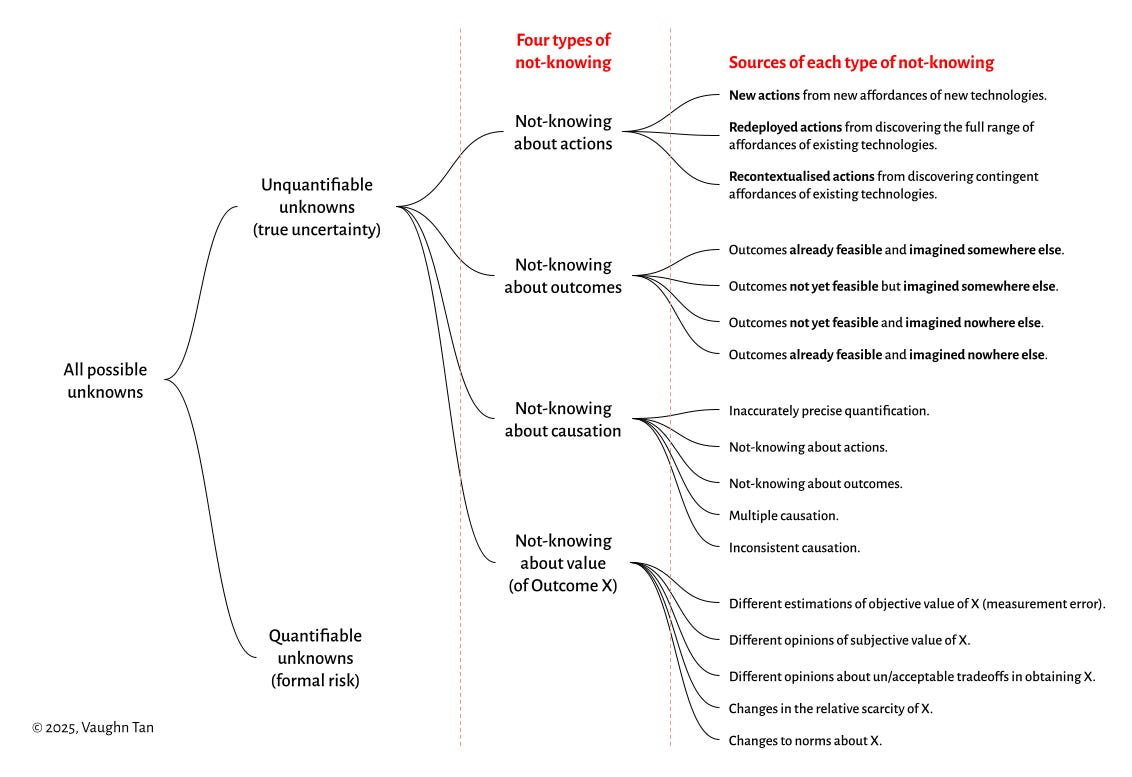Uncertainty
Diane Swonk | Job Growth and Economic Uncertainty | Elsewhere: Dissent, Many Uncertainties

…
Uncertainty is its own tax on the economy.
| Diane Swonk
Job Growth and Economic Uncertainty
Paul Krugman posted the chart above this week, after the Bureau of Labor Statistics recast job growth numbers for the last three months, saying:
It’s highly likely that what we’re seeing is the effect of Trump’s tariffs — or more precisely the uncertainty that his erratic tariff policy has created.
Josh Barro concurs with Krugman. In Well, This Jobs Report Clarifies Some Things, Barro quotes two members of the Federal Reserve board, and undermines Trump's baloney:
Waller and Bowman are both arguing for the president’s preferred monetary policy, but their case for why we need that policy — basically, that the economy may be just about to go to hell — could not be farther from the president’s own take, which is that the economy is great but it also, for some reason, needs support from lower interest rates.
Trump’s self-contradiction is sad and funny, at the same time. And then, in a turn that few expected1, he fired the bearer of the bad news, Erika McEntarfer, head of the Bureau. Trump claims she ‘rigged’ the numbers to harm him politically.
Barro adds:
As Jason Furman wrote before these jobs numbers came in, it seemed tariffs were already boosting inflation and dampening growth at the margin, albeit not to a sufficient degree to tip the economy into recession.
And now all bets are off.
This is the direct result of tariffs and uncertainty playing havoc in the labor market. How will businesses strategize and execute in the face of increasing economic uncertainty, and now, the added burden of deciding what numbers to trust once Trump appoints some know-nothing crony to head BLS?
Elsewhere
Coming Together, Coming Apart.
I noted that a noticeable number of readers recently ‘liked’ an older post, Dissent, Not Consensus, Is the Shorter but Steeper Path. I’ve made the post viewable for everyone, so others can see why it’s popular.
A good reason for a paid subscription: access to hundreds of older, but still relevant, posts in the archive. For example, Balancing Convergence and Divergence, which refers to the Dissent piece:
Once again, I see a call for lockstep groupthink as an unexamined necessity. In this case, a call for alignment from Hannah Price at the Jostle blog:
Keeping employees aligned is essential. Everyone should be marching to the beat of the same drum so your company can move forward in a unified, consistent, and efficient way. This week's Five for Friday delves into how you can achieve this and why it's so important.
Actually, dissent is a critical quality of creative, innovative workplaces where a high degree of autonomy is demanded by high-performing individuals and teams.
And, because uncertainty.
…
Many Uncertainties.
Perhaps it’s Trump’s tariffs, and the strange, swirling, and dangerous winds of geopolitical strain across the world, but I’ve seen a wide variety of viewpoints on uncertainty, recently.
Vaughn Tan offered up A not-knowing synthesis:
We often act like every unknown is just “risk,” but that prevents us from seeing that there are four deeper, non-risk types of not-knowing: About what we can do (actions), what could happen (outcomes), how actions cause outcomes (causation), and what outcomes are actually worth (subjective value). Each type has different sources — and each therefore demands its own way of thinking and acting strategically. Understanding these distinctions doesn’t just help us avoid mistakes; it makes strategy and innovation possible in a world where uncertainty is the rule, not the exception.
A must-read for students of uncertainty, attempting to clarify the differences between risk and true uncertainty.
…
Sonja Blignaut explains the name of her newsletter, Waycraft, in a post called Why Waycraft. She’s coined the term after years working with organizations around complexity and uncertainty. She says,
Waycraft is the craft of “walking-with” the unknown.
Despite her technique of single-sentence paragraphs, I think she’s onto something. She reminds me of Margaret Wheatley:
We weren’t trained to admit we don’t know. Most of us were taught to sound certain and confident, to state our opinion as if it were true. We haven’t been rewarded for being confused. Or for asking more questions rather than giving quick answers. We’ve also spent many years listening to others mainly to determine whether we agree with them or not. We don’t have time or interest to sit and listen to those who think differently than we do.
But the world now is quite perplexing. We no longer live in those sweet, slow days when life felt predictable, when we actually knew what to do next. We live in a complex world, we often don’t know what’s going on, and we won’t be able to understand its complexity unless we spend more time in not knowing.
| Margaret Wheatley, Willing to Be Disturbed
…
Mike Jones takes a proactive approach to countering uncertainty at the organizational level:
A strategy that survives contact with reality is not the one with the best plan. It's the one that enables the most meaningful action, that protects the edges of the organisation from centralised dysfunction, that decentralises sensemaking, and that builds structural autonomy, not just rhetorical intent.
Worthy reading, especially describing what leaders should be building:
A viable organisation isn't just one that is efficient or aligned; it is also one that is effective. It is one where each operational unit has the autonomy to respond to its environment, with coherence held by structures that coordinate, support, and enable adaptation.



